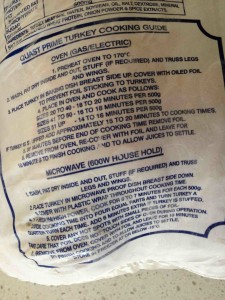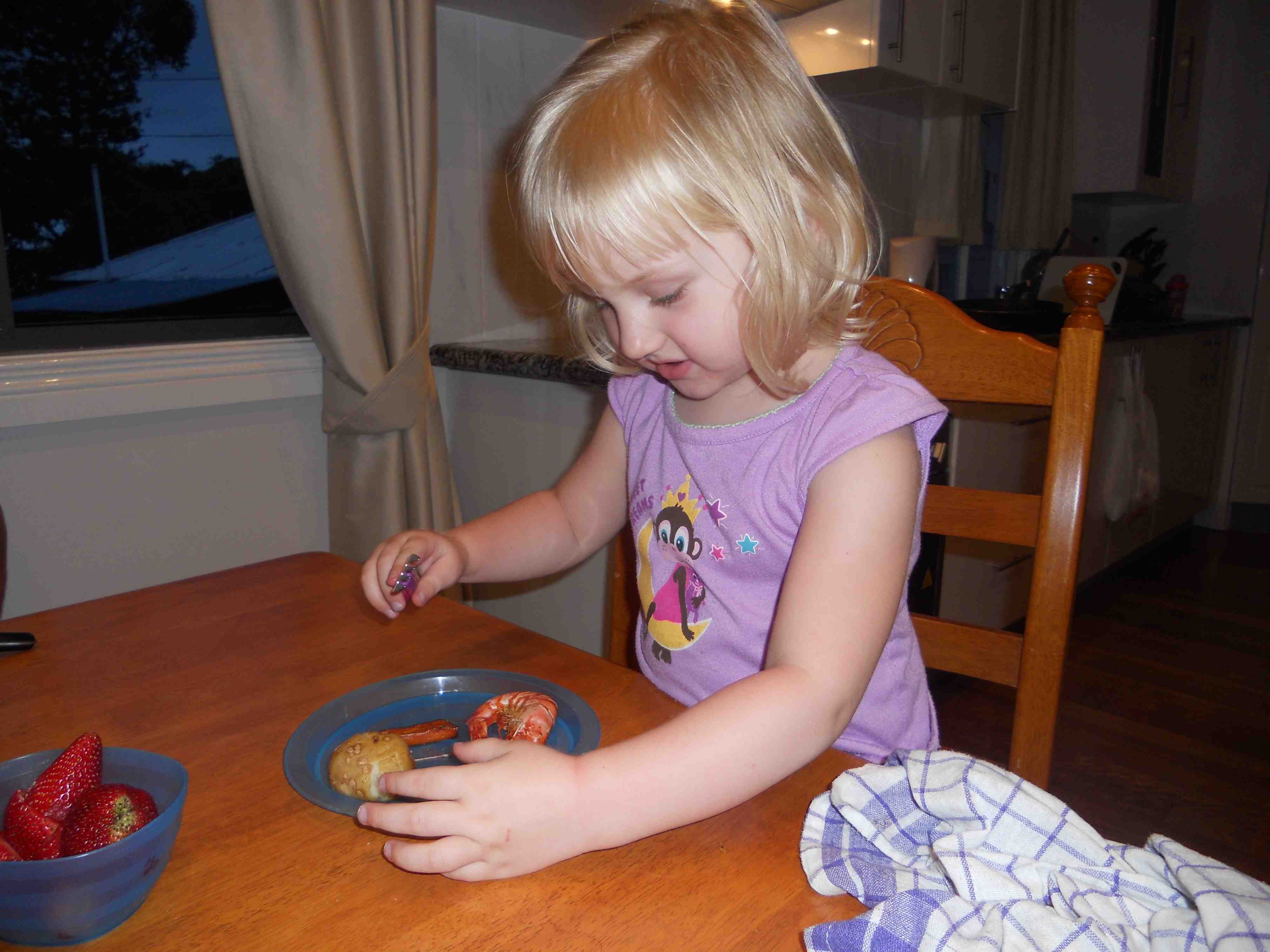In her somewhat annual Thanksgiving message to barfblog.com, Michéle Samarya-Timm of the Somerset County Department of Health, NJ, gets stuffed.
At Thanksgiving, if conversation isn’t about the bird, it’s about the stuffing: in the bird, or outside the bird? I teach food safety to a variety of folks, so my stance on this stays consistent…outside and 165 F.
Attendees at my food safety class last week brought up a refreshingly different question….does it matter what the stuffing is made of?
I know the barfblog guys are particular about stuffing; Doug wrote about it last Thanksgiving. His refrigerator potpourri technique sounds tasty…a gourmet mélange of basic ingredients. Call it barfblog’s Best Thanksgiving Stuffing, if you will. But this recipe has competition.
Cookbooks and websites are chock-full of the best-ever stuffing recipes with subtle twists on traditional ingredients. Using bread? Options are endless: Cornbread, multi-grain whole-wheat, .jpg) sourdough, rye, bagels, and the ever-popular squishy white Wonder Bread.
sourdough, rye, bagels, and the ever-popular squishy white Wonder Bread.
Not a bread person? How about a rice stuffing? You can choose from white, wild, saffron, risotto, or last night’s leftover steamed. It’s easy to see how basic substitutions have expanded the variations for grandma’s recipe.
The advent of processed foods managed to usher in some more kitschy offerings, that surprisingly have cult followings: Corn Flakes stuffing (featured this morning on NPR), Ritz Cracker stuffing, or even White Castle hamburger stuffing.
I began to wonder about alternate approaches to this traditional side dish. I’ve heard of stuffing made with items such as sausage, lobster, clams, chestnuts, pine nuts, zucchini, or bacon.
These can all be personalized marks of a creative cook. In addition, I recall many times in my own kitchen when I needed to get inventive for lack of an essential ingredient. So I might be able to understand why there is a recipe for popcorn stuffing. What surprised me were the more unique renditions of this holiday classic that could make a Thanksgiving one to remember:
Didn’t have time for breakfast this morning? No problem – you can make stuffing from oatmeal, grits, grape nuts or captain crunch.
Don’t like the taste of turkey? Pair it with stuffing made college-style with pizza…or Italian style with prosciutto, salami and pepperoni …or man-style with steak and bacon.
For a multi-cultural twist, try tortilla chip stuffing, lasagna stuffing, or a mofongo mix – a Puerto Rican specialty of fried green plantains mashed up with bacon, sofrito and olive oil.
You could consider the epicurean dish turducken (a chicken stuffed into a duck, which itself is stuffed into a turkey) as the ultimate in stuffing options…or is it?
I pondered…is there anything edible that can’t be cooked as stuffing?
I tried searching for the strangest options, and uncovered stuffing recipes containing alligator, applesauce, chocolate (now that may be onto something), peanut butter, Twinkies and donuts.
Devil Dogs, cookies, pop tarts, matzos, malted milk balls — you can pretty much put anything in; if it’s edible it can be made into stuffing.
The key is not the ingredients so much as the food safety. You can make stuffing from homemade cornbread, marshmallow peeps, bologna or rutabaga, so long as you cook it thoroughly and check it with a probe thermometer. 165 F kills a whole host of common pathogens. Kill the pathogens, not your guests.
Stuffing isn’t evil; cooking it incorrectly is.
Thankful for all those who keep our families, our food supply, and our country safe.









 staples, though prepared in fresh and healthy ways. …
staples, though prepared in fresh and healthy ways. … Windows and doors are usually kept open to capture summer breezes, but closed as the nocturnal wildlife emerges at dusk.
Windows and doors are usually kept open to capture summer breezes, but closed as the nocturnal wildlife emerges at dusk..jpg)
.jpg) sourdough, rye, bagels, and the ever-popular squishy white Wonder Bread.
sourdough, rye, bagels, and the ever-popular squishy white Wonder Bread.